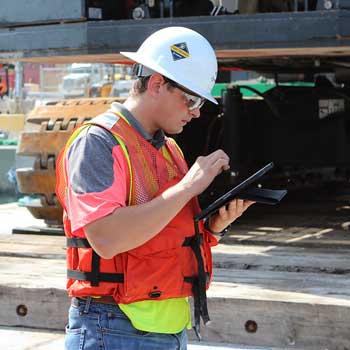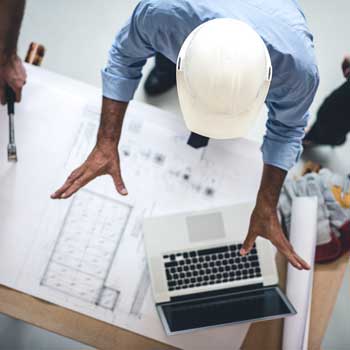Since the Stone Ages, humankind has found new ways to build more efficiently, reducing the time it takes to build large-scale projects.
With remarkable discoveries and advancing technology, construction is now safer, more cost-effective and more environmentally friendly than it ever has been.
Here we explore five important construction innovations and inventions that have helped to transform the construction industry.

Computer-Aided Design (CAD), developed in the 1960s, is a software program helping construction craft professionals by increasing efficiency and reducing the time it takes to create designs. Sketching in either 2D or 3D, CAD allows architects, engineers and others to interact with and build drawings.
Imagine having an entire computer software that helps you bring your imagination to life – sound cool? The construction industry thought so too!
Benefiting the industry in multiple ways, CAD is a tool that has continued to impact and improve construction.
Project designs can be changed in real-time. Drawings and plans can be stored in the Cloud for easy access and CAD software is more accurate than manual drawings. Supporting collaboration and highly detailed work, this program proves technology can revolutionize many different industries.
Digitally representing both the physical and functional characteristics of a construction project, building information modeling (BIM) is a star player in the industry. Helping describe every aspect of design from early conception to construction, this invention has made a huge difference in the industry.
Not only does it improve the development and resolution periods of the project cycle, BIM technology also has a multidimensional capacity. Working in subsets, craft professionals can visualize projects in 3D, 4D, 5D and even all the way up to 8D!
Redshift by Autodesk looked at some of the benefits of BIM and it shows that BIM improves collaboration, reduces fragmentation, offers mobility and does much more.
Since it was first introduced, BIM has become one of the most reliable ways to share data in construction industry.

One of the biggest misconceptions about the construction industry is that it is unsafe. But the construction industry is safer than you might think!
In fact, the development of personal protective equipment (PPE) helps to reduce the number of onsite injuries in the industry. Safety is important and these innovations focus on protecting craft professionals in the field.
According to OSHA’s quick card, personal protective equipment covers five major categories:
Safety glasses, face shields, safety-toed footwear, gloves, earplugs and hard hats are all examples of personal protective equipment.
While other inventions or innovations on this list may be far more technologically advanced, personal protective equipment is just as important. When looking at its impact on the industry over the past 40 years, there is no doubting that it contributed to improving the health and safety of craft professionals.
A recent innovation created by Hendrik Jonkers, self-healing concrete, is predicted to completely transform the future of construction industry.
Concrete is the second most widely used substance on the planet, but also has a number of environmental impacts. To build the roads, houses, bridges and other construction related projects, we need concrete, but the industry is also becoming more conscious of its footprint.
Over time, concrete experiences normal wear and tear. So — What if all the concrete that gets distributed worldwide could fix itself when cracks form?
Self-healing concrete is designed to repair micro-cracks in concrete using limestone-producing bacteria.
Yes, you read that correctly, we said bacteria!
These bacteria are mixed into concrete and use water and heat to repair damages. Flowing through the concrete base, it redistributes itself, bonds together and fixes small cracking before it gets too large.
With self-healing concrete, it would not only help make structures safer, but it will also further the construction industries push to be more environmentally friendly.
Have you ever wanted to see a drawing you made come to life?
Virtual reality (VR) in the construction industry gives craft professions the opportunity to fully immerse themselves in a virtual space. Much like BIM or CAD, virtual reality increases construction efficiency, accuracy, safety and collaboration, but one of the most important features to VR is that it enhances the overall experience.
From start to finish, virtual reality gives craft professionals and customers a way to visualize the final product and understand what it feels like to be in the space, including the view, furnishing, layout and more.
It is the unique characteristics from each of these innovations and inventions that have impacted the construction industry greatly. Whether it’s a developing technology or improving old ways, construction continues to grow.
What’s the next thing in store for the construction industry? We may not know yet, but we do know it will help build America!